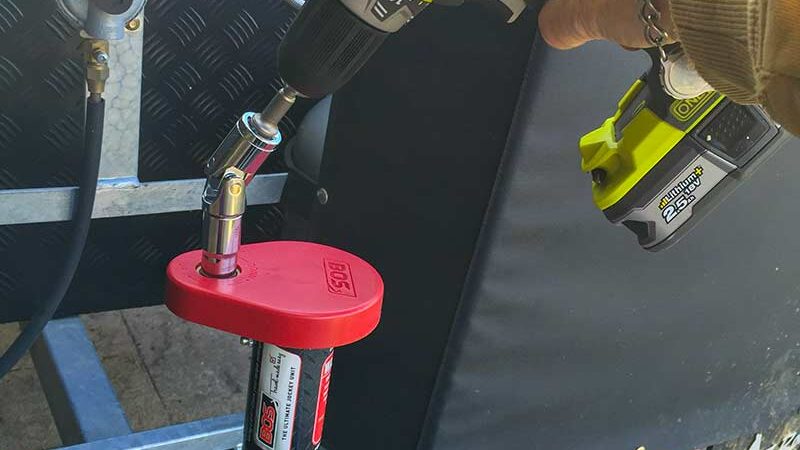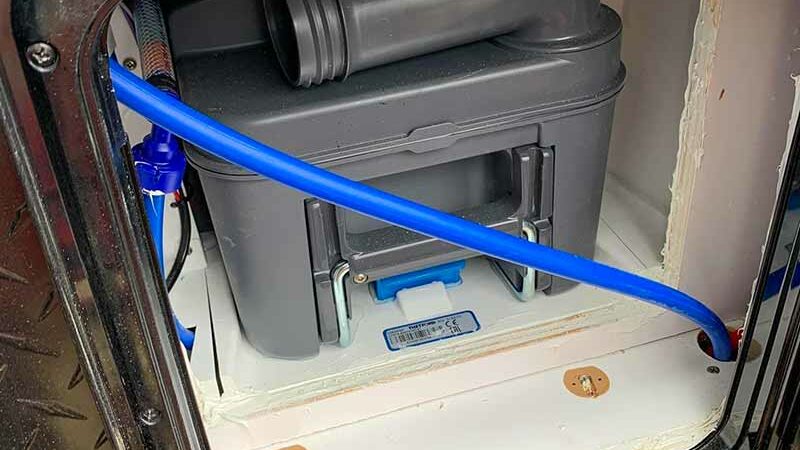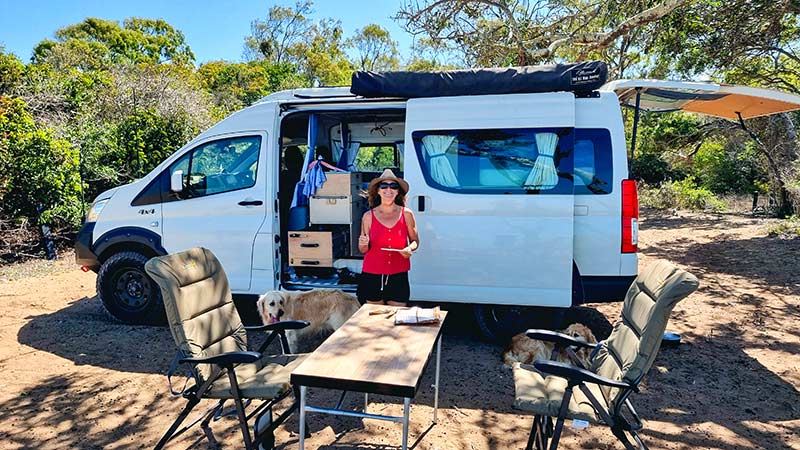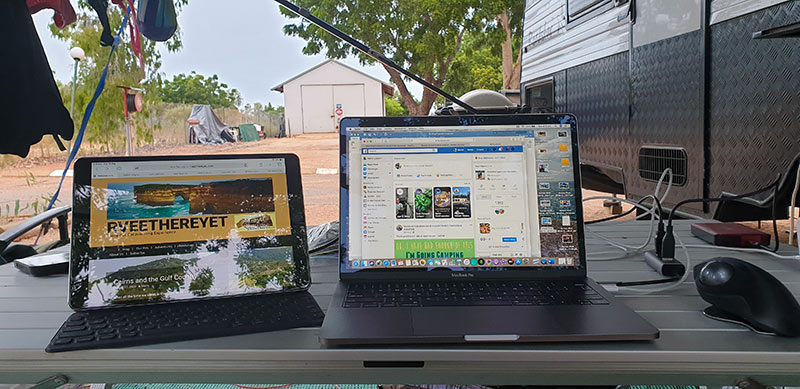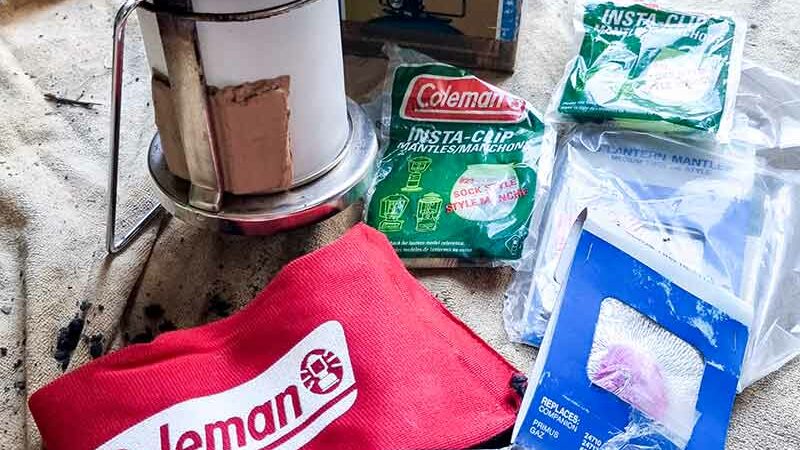Product Test: 12V Cooking
I have a confession to make. I have the culinary ability somewhat akin to a blind man attempting to complete a 1000-peace jigsaw of a map of Australia.
If you want a great Vegemite sandwich, I’m your man!
Okay, perhaps I’m not that bad, I can look after myself, both at home and on the road. It’s just that my meals tend to be quite repetitive and simple. Not so my fairer half; she’s a whiz who can seemingly whip up a treat, with what I thought were non-existent supplies in the fridge and pantry. I must try the ‘have a mother’s look’ process some time!
Provided I’ve got a cooker (gas, induction or fire), plus a means of boiling water, I’m a happy camper.
Imagine my partner’s delight when I told her I was the proud owner of a heap of 12V cooking appliances that’ll make our bush cooking quicker, easier and tastier. Imagine my partner’s disgust when I told her she could use them as much as she wanted!
12V COOKING APPLIANCES
Let’s get something straight. These appliances are indeed 12V. They are not 240V, used through an inverter, as per some other brands on the market. These either plug into your onboard 12V battery system via a cigarette or Anderson plug. They will consume far less power than an equivalent 240V version. Simple.
I got these appliances from Aussie Offroad 4×4 Accessories. We have the RockArmor 12V Air Fryer, the RockArmor 12C Gourmet Sandwich & Grill Press, the RockArmor 12V Pressure Cooker, and the RockArmor 12V Toastie Maker (I have these four items in my hot little hands), while you can also get a kettle, a coffee machine and a rice cooker.
I do know this company has more appliances on the horizon as it develops the range, but I was told in no uncertain terms that if I let the cat out of the bag, they’d have my fingers in the sandwich press. So I’ll leave that to you to skip over to its website occasionally to see what gets added.
12V POWER CONSUMPTION
Given these appliances are true 12V, they’ll use considerably less power than a 240V version running through an inverter. But you’ll still need to take note of the power draw of each appliance and ensure your battery bank is of adequate size. Plan and cook meals that can be completed in shorter cook-times to prevent over-draining and possibly damaging your battery bank.
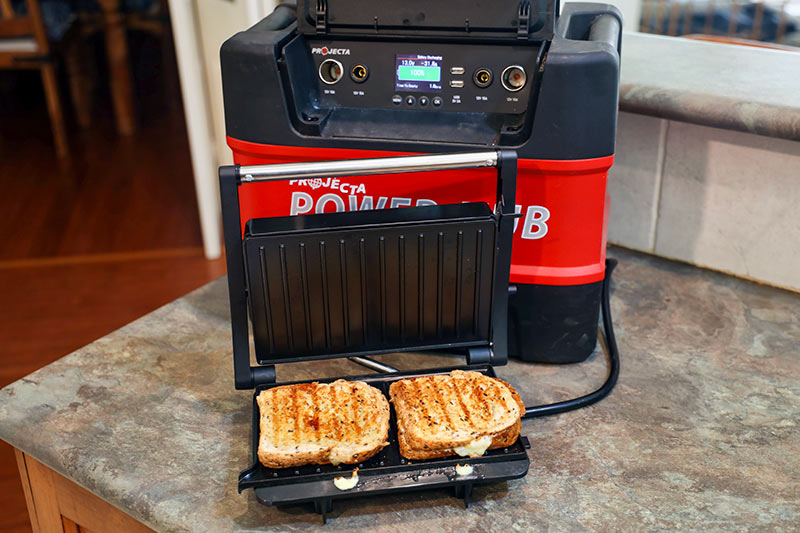
As an example, the 12V air fryer draws up to 250W depending on the function being used, while the toastie maker and the sandwich grill press consume 250W. The draw of the pressure cooker is from 150 to 200W, again depending on the chosen function.
Yes, they are all higher than a typical 12V car fridge while cycling on, but zero while inactive. A car fridge, over the long term, will use much less power than these cooking appliances. The drain from a car fridge is much easier to replenish via solar or the car’s alternator, whereas the cooking appliances will need much more ‘oomph’ from a recharging system to get the battery back up to full charge, depending on how much you use them. Short cooking meals are what you’d be aiming for but, again, does depend on your battery bank size and recharging ability.
12V TOASTED DELIGHTS
First up, the toastie maker and sandwich press do essentially the same job. I ensured my stand-alone 100Ah lithium battery in my Projecta battery box was 100 per cent charged and set to cooking.
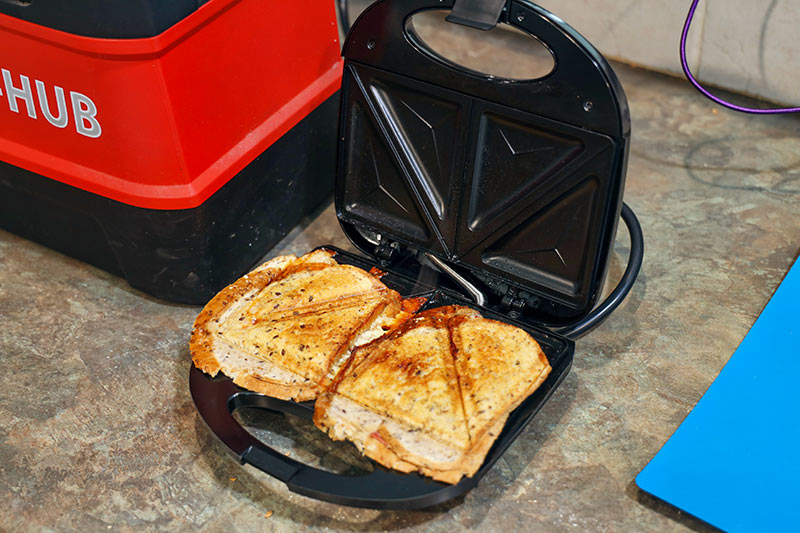
As I would at home on 240V, I pre-heated each appliance while preparing the food, then popped the two sambos right in, squeezed the handles closed and stared, licking my lips like Pavlov’s dogs, knowing what was to come.
Given its simplicity, perfectly matching my cooking skills, the toastie maker was the first to hit the battery bank. Ham, cheese and tomato on wholemeal bread – it doesn’t get any easier than that, and is what I often serve up at home.
To my surprise, the result was perfect. I took a bow!
Next, the sandwich and grill press. The same simple meal of toasted sandwiches returned a smile from one side of my barbecue sauce-smeared mouth to the other. Although I was in the safety of my own backyard, it was pleasing to know we could create these easy and delicious meals on the road now.
Both appliances certainly cooked the food, albeit slower than a 240V equivalent. The toastie maker, however, was slower than the press to cook the same food.
12V AIR FRYER
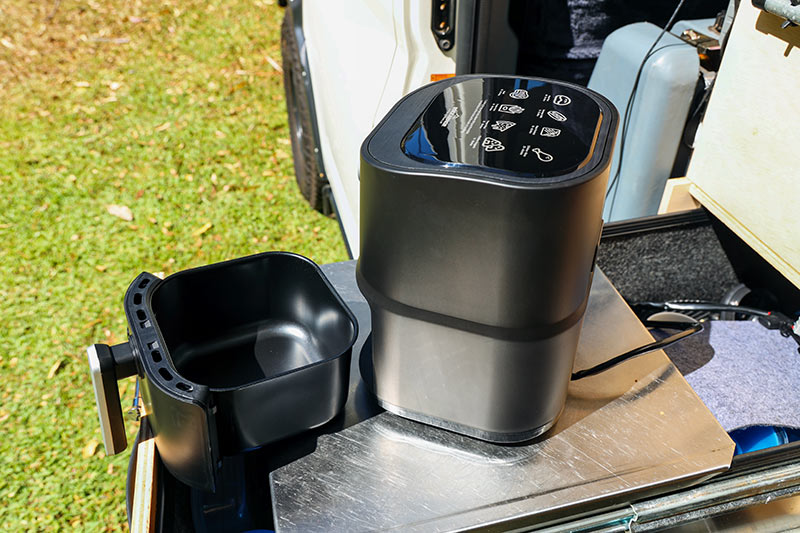 Meat pies and pizza. I know they’re not much of a healthy meal, but I figured staple foods like this – well, okay, junk food – are what most seem to be cooking in those small travel ovens, so figured this would be a great comparison. Yes, you can cook meat, chips and many other better meals, but given how well this air fryer did the job, I reckon it’s a winner.
Meat pies and pizza. I know they’re not much of a healthy meal, but I figured staple foods like this – well, okay, junk food – are what most seem to be cooking in those small travel ovens, so figured this would be a great comparison. Yes, you can cook meat, chips and many other better meals, but given how well this air fryer did the job, I reckon it’s a winner.
12V PRESSURE COOKER
As much as I hate to admit it, the pressure cooker is above my pay grade when it comes to preparing interesting, succulent meals. I looked up a simple meal recipe, then made it simpler by only cooking the meat part.
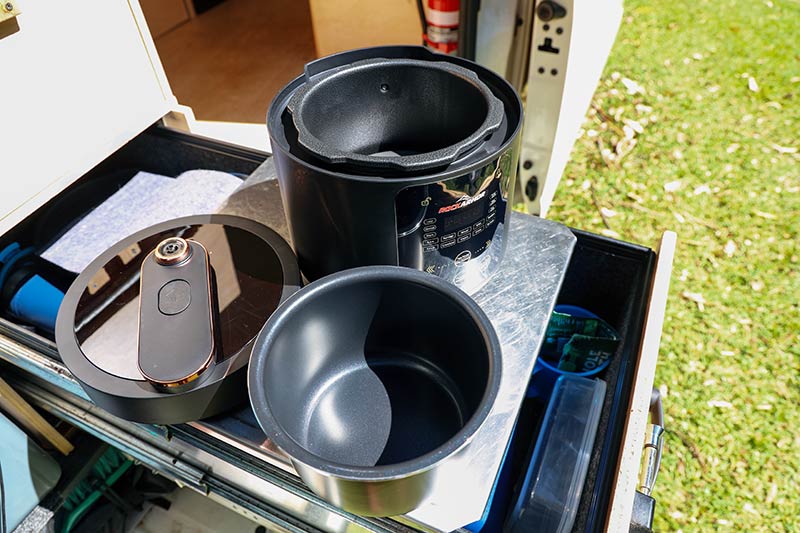 A couple of chicken drumsticks coated with a handful of herbs (can’t tell you my secret, but if Colonel Sanders can do it, surely I can) and dialled up the time to start cooking.
A couple of chicken drumsticks coated with a handful of herbs (can’t tell you my secret, but if Colonel Sanders can do it, surely I can) and dialled up the time to start cooking.
To my surprise, the drummies turned out perfect. The aroma, the juicy meat and the taste were brilliant.
All up, this meal took the longest, but only chewed through about ten percent of my battery – not bad!
DOWNSIDES?
Not that any of these appliances were overly heavy on the battery draw, but given the usage of each and if you didn’t have a decent recharging system, combined with the longer cook times, the only downside I can see is that you should be picking your meals wisely to help preserve your battery bank.
The smaller size of each appliance dictates you won’t be cooking for the whole footy team. Rather, a couple or a small family would be perfect.
To me, given more appropriate battery reserves, like the 400Ah system in our converted 4×4 HiAce camper, it makes total sense to include these appliances on our longer journeys around the countryside. The same would go for most off-grid caravan fitouts – these appliance are perfect for knocking up almost the same meals you would at home… No, not Vegemite on toast!
The results: well, nothing short of brilliant.
Given Sharyn has new tools to play with, I’m thinking we’ll be doing even more camp cooking than ever, and I’m sure she won’t serve up pies and pizza.
PLUGS
Amongst these four 12V appliances, there are three different types of plugs. Why?
It’s all about the power draw. The more power an appliance draws, the better the plug must contact when plugged in. That is, the plug needs to be able to handle the power being used, without failing via overloading the switch itself.
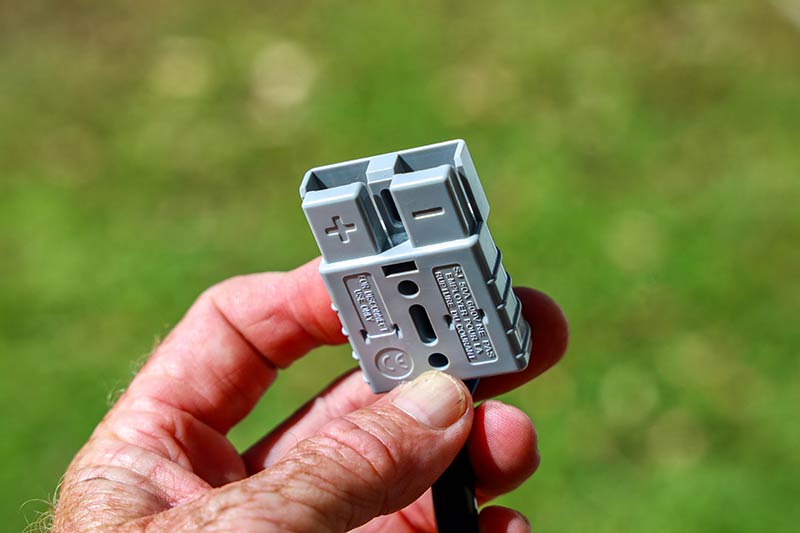 Let’s start with the ciggie plug. They are generally rated at 10A, which allows them to draw 120W. Some, with a higher rating of 20A, can handle 240W of power. Given that, the air fryer is the only appliance here that comes with a ciggie plug. But there is also a hard-wire option included in the packaging, which I’d be using just for good measure.
Let’s start with the ciggie plug. They are generally rated at 10A, which allows them to draw 120W. Some, with a higher rating of 20A, can handle 240W of power. Given that, the air fryer is the only appliance here that comes with a ciggie plug. But there is also a hard-wire option included in the packaging, which I’d be using just for good measure.
The Anderson plug is about as good as it gets so far as handling higher loads and returning a good, positive connection are concerned. The 50A Anderson is the go-to for most applications in the automotive, caravanning and camping industry, as well as solar applications, although there are higher-rated version if needed.
Given the higher rating, the other three appliances here rely on an Anderson plug for connecting to the 12-volt source.
MARK’S WISE WORDS
Technology is grand when it works as intended. I reckon embracing it to make your camping easier and more convenient is the way to go.
Old dogs can indeed learn new tricks. Just look at me go, using battery power to cook instead of over a fire! But sadly, staring at a battery is nowhere as soothing as a fire at camp…
The post Product Test: 12V Cooking appeared first on GoRV.


